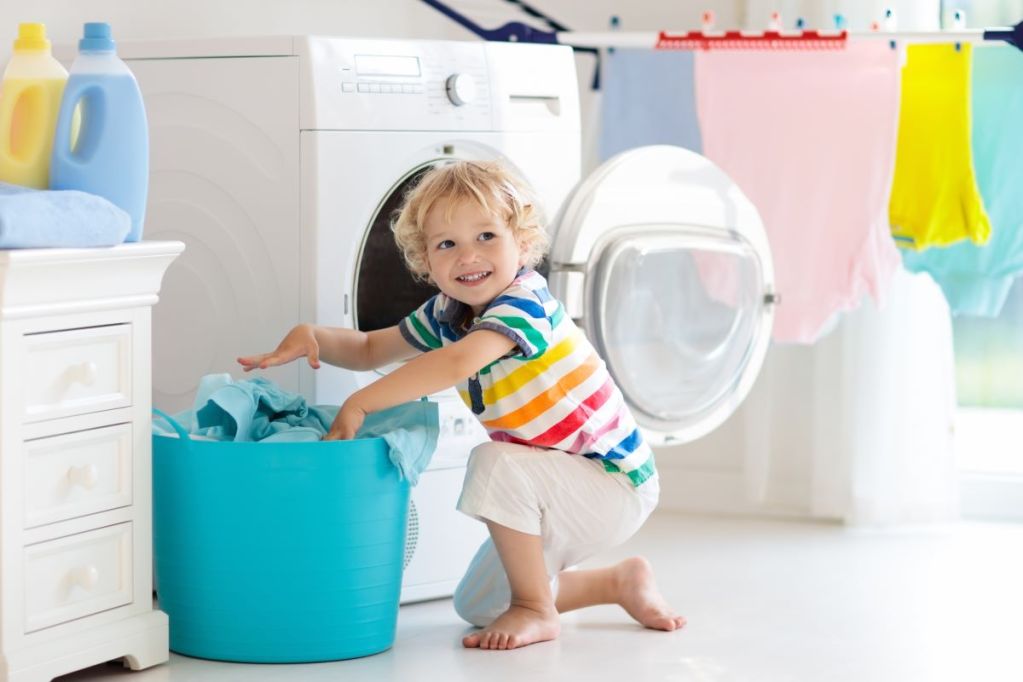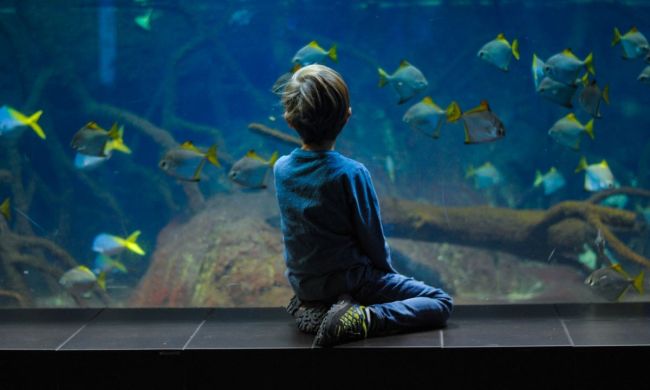
Are kindergarteners too young for chores? Absolutely not. If you haven’t already started giving your 5-year-old simple chores around the house, now is the perfect time to start. Having chores for kids to do is more than just giving busy parents a hand.
Chores go a long way toward teaching children important life skills. Doing chores actually has a lot of benefits for kids. These household chores teach children responsibility and give them a sense of belonging. Helping with simple tasks around the house also works to improve a child’s confidence and self-esteem. Getting kids used to completing those everyday tasks like making the bed and doing laundry will most certainly be prudent when they’re ready to head off to college or get out on their own. So, what are the best chores for kindergarteners and young children?
Chores for kindergarteners
Kindergarten is a wonderfully fun age. At the ages of 4, 5, and 6, kids are curious about everything and love to spend time with their parents. Kindergarteners also want to do the things they see their parents doing, which is why it’s the ideal time to introduce them to chores.
When deciding on chores for your kindergartener or young child, remember to keep the tasks simple. Be sure to give clear and uncomplicated directions. Remember, it’s OK to add an element of fun, too. Music is a great way to inject enthusiasm into chores for kids and adults as well. Now, let’s get to work.
Best chores for kindergarteners
When you’re making up the to-do list around the house, these are the top chores for young children and kindergarteners to get busy with.
Cleaning up books and toys
If your child has been to preschool, they’re already familiar with cleanup time. Cleaning up in school is an all-hands-on-deck chore. It also works well in a classroom because all the shelves are accessible to kids. If your child isn’t already pitching in to clean up the toy room or their bedroom, it’s time. Make sure the toys and books have a place your little one can reach with containers they can carry and put away.
Helping in the garden
Watering plants in the house and outside is a perfect chore for kindergarteners. They, of course, love water. The key to caring for plants is giving kids a watering can they can carry. Show them how to fill the watering can, being careful not to overfill. Then, be sure to demonstrate how much water is enough. Kids can also help with weeding. Just be nearby to ensure they’re not pulling plants out. Another kid-friendly outdoor chore is helping with the planting. Kids enjoy digging holes and putting seeds in the ground. Gardening is a fun chore you and your kindergartener can do together.
Emptying the dryer
Parents never have enough hands to do all the chores around the house, which is why it’s wonderful to have kindergarten helpers. Emptying the dryer can be a pain if you’re in the middle of dinner, but it’s an easy one for 5- and 6-year-olds.
Setting the table
Another simple chore when you’re trying to get a meal ready is setting the table. Kindergarteners can put out placemats and napkins. They can even do the plates and silverware if you get them down from the cabinet and within reach to put out. Remember to teach kids to wash their hands first and to put plates out one at a time. If your youngster isn’t ready for dishes yet, that’s fine. Start with placemats and napkins. Even something small will give them a sense of accomplishment.
Picking up dirty clothes
Save yourself the headache when the kids hit the teen years and get little ones in the habit of picking up dirty clothes and putting them in the hamper. Kindergarteners can also lend a hand when sorting clothes for the laundry.
Making the bed
Another chore that will go a long way in later years is learning how to make the bed in the morning. In the beginning, kids will definitely need a hand, but it won’t be long before they can straighten their bed out in the morning and sit up all their stuffed animals on their own.
Putting away groceries
This is a chore a lot of adults dread, but kindergarteners won’t. Young children can help bring light grocery bags in from the car and put away the non-breakables. Kids can also help wash the produce with supervision.
Dusting
What adult doesn’t hate this chore? Put a pair of old socks on your kindergartener and show them where to dust. They will enjoy seeing how much dirt they’re pickup up on the socks and you’re getting a tedious chore done.
Should you give an allowance?
Some parents use an allowance as an incentive to encourage kids to complete chores. Earning an allowance has benefits very similar to chores. Kids learn responsibility and get a taste of independence. They can use allowance money for extra things they want, which teaches children money management skills. Kindergarten is not too young to begin giving kids an allowance for completing chores. How much is up to you, though a good rule of thumb is a dollar for each year of your child’s age. You can give them their allowance weekly, biweekly, or monthly.
Chores for kids
Sure, sometimes it’s easier and quicker to do the chores yourself. Unfortunately, that isn’t always the best idea when it comes to kids. Having children complete age-appropriate chores helps teach responsibility and important life skills. There are a lot of benefits to having chores for kindergarteners to do inside and outside of the house. These eight chores for kids are ideal to start with.






